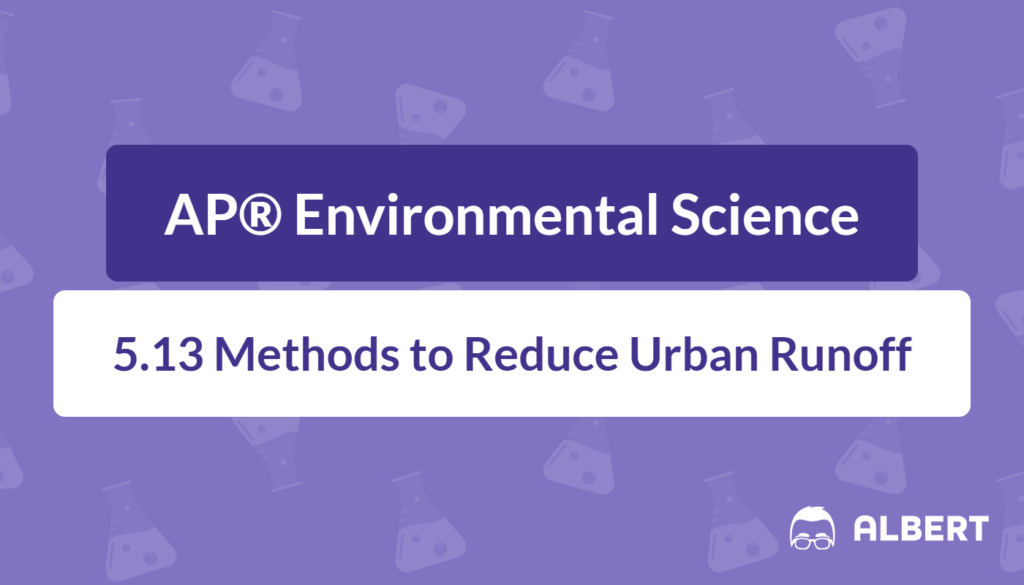What We Review
Introduction
Urban runoff occurs when rain falls on surfaces that do not allow water to soak into the soil. Because urban areas typically have extensive paved surfaces—such as highways and parking lots—large volumes of water end up flowing across land and into drainage systems. This runoff can transport fertilizers, oils, metals, and other pollutants into rivers, lakes, and oceans. Consequently, water quality degrades, and aquatic organisms often suffer. In addition, flooding becomes more likely when excess water quickly overwhelms storm drains. Recognizing the scale of this challenge is the first step in devising practical strategies to control runoff.
Reducing urban runoff involves carefully planning streets, buildings, and landscapes to allow water to seep into the ground at a healthier rate. When water filters into the soil, pollutants are intercepted, reducing their impact. Various techniques can improve infiltration, from replacing existing surfaces with permeable pavement to creating green spaces that capture stormwater.
Understanding Urban Runoff
Urban runoff refers to stormwater that travels across impervious surfaces. In natural environments, soil and vegetation help regulate how water flows and how quickly it soaks into the ground. However, paved surfaces in cities typically lack such natural buffers. Therefore, water accumulates rapidly and runs off at higher speeds. This stormwater then carries pollutants from roads, rooftops, and lawns straight into local waters.
Urban expansion significantly affects water quality. For instance, bigger roads lead to more paved surfaces, which in turn reduce infiltration. Next, increased traffic congestion can deposit car-related pollution onto roads. When it rains, these contaminants quickly flow into nearby streams. Thus, understanding how urban structures influence water movement is crucial for reducing the detrimental effects of runoff.

The Challenges of Urban Runoff
Urban runoff poses multiple challenges:
- Degraded Water Quality: Pollutants like heavy metals and pesticides harm aquatic organisms.
- Flooding: Large volumes of stormwater overwhelm drainage infrastructures.
- Erosion: Rapidly flowing water can erode stream banks and create sediment buildup downstream.
The primary culprit behind these challenges is the presence of impervious surfaces. Impervious materials, such as concrete and asphalt, do not allow water to infiltrate into the ground. Instead, they channel water away from potential infiltration sites. Therefore, thoughtful design of city landscapes is imperative to reduce flooding, maintain healthy waterways, and minimize erosion.
Methods to Reduce Urban Runoff
Below are several methods aligned with AP® Environmental Science guidelines for increasing infiltration and reducing runoff. Each method addresses specific challenges linked to urban water management.
1. Permeable Pavement
Permeable pavement is a special type of surface that allows water to pass through it, soaking into the underlying soil rather than running off. This material can be made from porous asphalt, concrete blocks, or interlocking pavers with spaces for water to drain.
Explanation:
Traditional roads comprise solid asphalt or concrete that water cannot penetrate. In contrast, permeable designs feature tiny openings or gaps that channel water downward. Thus, pollutants settle out in underlying layers, and potential flooding decreases. This approach directly tackles the issue of impervious surfaces.
Step-by-Step Example (Installing Permeable Pavement):
- Assess Drainage Needs: Urban planners evaluate the area’s average rainfall and existing drainage patterns.
- Select Materials: City officials choose a type of permeable surface, such as permeable concrete blocks or porous asphalt.
- Prepare Sub-Base: Workers lay a stone sub-base that facilitates \text{infiltration}. This layer stores water temporarily before it is absorbed by the soil.
- Install Pavement: The permeable paving material is placed on top of the sub-base.
- Final Testing: Water is poured onto the pavement to check that it seeps through consistently.
This process effectively reduces surface runoff by encouraging water to permeate into the earth, allowing nature to filter out pollutants.
2. Planting Trees
Trees play a prominent role in managing stormwater. Their roots create pathways for water to infiltrate the soil, and their canopies slow the force of falling rain.
Explanation:
When rainwater hits tree leaves and branches, some of it evaporates before reaching the ground. The root systems then take up water from the soil. Furthermore, decomposed plant matter around tree bases helps trap contaminants. Altogether, trees act as a natural filter and sponge.
Step-by-Step Example (Community Tree-Planting Initiative):
- Selection of Locations: Organizers identify areas near sidewalks and parking lots lacking vegetation.
- Choosing Tree Species: Native, drought-resistant species are often favored because they thrive in local conditions and require less maintenance.
- Preparing the Soil: Compost and mulch are worked into the ground to enhance \text{water infiltration}.
- Planting and Maintenance: Volunteers plant saplings, water them regularly, and ensure they remain healthy.
- Long-Term Benefits: Over time, the tree canopy expands, reducing runoff and improving air quality.
Eventually, widespread tree planting across impervious landscapes can significantly reduce both runoff volume and pollutant loads.
3. Increased Use of Public Transportation
Traffic contributes to urban runoff pollution by depositing heavy metals, oils, and tire particles onto roads. When it rains, these contaminants wash into storm drains.
Explanation:
By reducing the number of vehicles on city streets, communities decrease roadway pollution. Additionally, fewer roads may be needed if many people rely on public transit. In turn, smaller road networks often translate to less impervious surface area.
Real-World Case Study (Highly Effective Public Transit System):
Consider a fictional city named “Transitville” that invested in an extensive bus and light rail system. Initially, the city had expansive highways prone to flooding because water rapidly flowed off the impervious asphalt. Over a decade of promoting public transit, new roads were rarely constructed, and unused parking lots were converted into parks. Stormwater runoff declined sharply. Therefore, Transitville’s approach highlights that urban design choices—guided by effective public policy—can dramatically reduce runoff.
4. Building Up, Not Out
The pattern of building outward, often called suburban sprawl, increases impermeable surfaces and disrupts ecosystems. By contrast, constructing taller buildings and using existing land more efficiently minimizes the total paved area.
Explanation:
When developers opt for vertical development, cities can accommodate population growth without covering more land. Denser neighborhoods typically require fewer roads, meaning less space is paved with impervious materials.
Comparative Example (Urban Density and Runoff Reduction):
- Suburban Area Analysis: A sprawling neighborhood with large lots has extensive road networks and minimal green space.
- Urban Core Design: A taller building in the city center houses the same number of residents on a much smaller footprint, leaving room for green areas.
- Resulting Changes: Rainfall in the denser urban core is more effectively managed, as there are fewer wide roads and driveways.
- Environmental Outcome: Less runoff occurs because open space remains for water infiltration.
Thus, by building upward instead of outward, communities can preserve green zones, reduce habitat destruction, and limit stormwater complications.
5. Rain Gardens and Green Roofs
Rain gardens and green roofs enrich urban landscapes by retaining and filtering stormwater where it falls.
Explanation:
A rain garden is a shallow, vegetated basin that collects runoff from places like rooftops or driveways. Green roofs, on the other hand, are specially designed rooftop plantings. Both features slow the movement of water, giving it a chance to percolate into the soil or be used by plants.
Step-by-Step Example (Installing a Green Roof on a School):
- Structural Assessment: Engineers confirm the school roof can support a vegetative layer.
- Waterproofing: Crews install a waterproof membrane over the existing roof structure.
- Soil and Plant Selection: Climate-appropriate drought-resistant plants are chosen.
- Monitoring and Maintenance: Sensors track moisture levels to ensure \text{infiltration} remains efficient.
- Environmental and Educational Benefits: Students learn about sustainability while seeing how much water the roof retains.
Green roofs and rain gardens can dramatically decrease runoff volumes, cool building interiors, and even provide habitat for pollinators.
Benefits of Reducing Urban Runoff
Using these methods brings noticeable environmental, economic, and social benefits. First, improved water quality supports aquatic life, from microorganisms to fish populations. Second, flooding decreases because stormwater systems no longer face extreme pressure. Third, communities spend less on water treatment and flood mitigation, freeing up funds for other projects.
Moreover, green initiatives like tree planting or installing permeable pavement often lead to job creation in landscaping and construction fields. Likewise, promoting public transportation fosters social connectivity by making cities more navigable for diverse populations. Ultimately, the goal is to achieve a balance between growth and environmental stewardship, ensuring that local ecosystems thrive alongside urban development.
Conclusion
Urban runoff remains an urgent environmental challenge that grows with urban expansion. However, adopting strategies like permeable pavement, planting trees, utilizing public transit, building vertically, and installing rain gardens or green roofs helps reduce impervious surfaces and enhance \text{water infiltration}. When these methods are combined, they form a robust approach to managing stormwater in a responsible and sustainable way. Reducing polluted runoff benefits both natural ecosystems and human communities, aligning with AP® Environmental Science goals of conservation and environmental health.
A thorough understanding of these solutions will help students envision more resilient cities. By mastering the basics of urban runoff and learning techniques to mitigate it, future environmental scientists, policymakers, and planners can take meaningful action. These efforts ultimately improve the quality of life in urban areas while safeguarding local ecosystems.
Important Vocabulary
- Urban Runoff: Water that flows over urban surfaces, carrying pollutants into waterways.
- Permeable Pavement: Pavement that allows water to infiltrate through its surface, reducing runoff.
- Water Infiltration: The process of water soaking into the ground, often aided by soil and vegetation.
- Impervious Surfaces: Ground covers, such as asphalt and concrete, that do not allow water to penetrate.
- Rain Garden: A planted depression designed to capture stormwater and promote infiltration.
Sharpen Your Skills for AP® Environmental Science
Are you preparing for the AP® Environmental Science test? We’ve got you covered! Try our review articles designed to help you confidently tackle real-world AP® Environmental Science problems. You’ll find everything you need to succeed, from quick tips to detailed strategies. Start exploring now!
Need help preparing for your AP® Environmental Science exam?
Albert has hundreds of AP® Environmental Science practice questions, free response, and full-length practice tests to try out.








